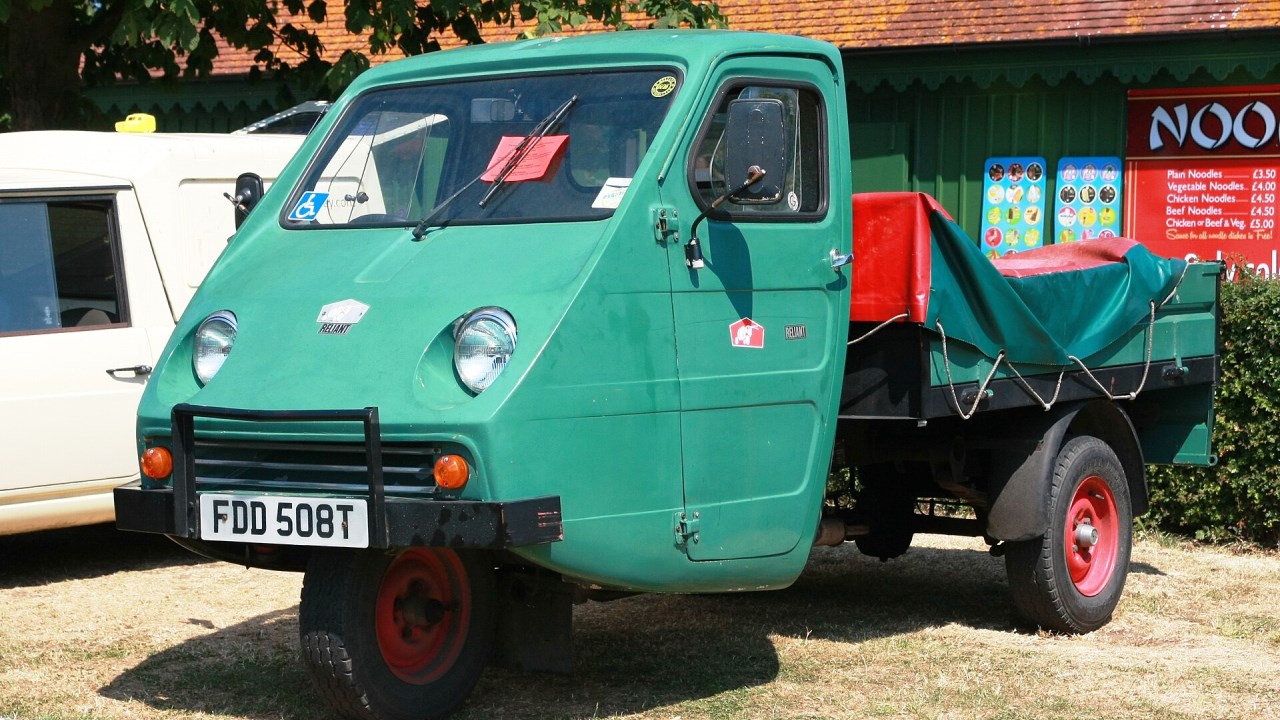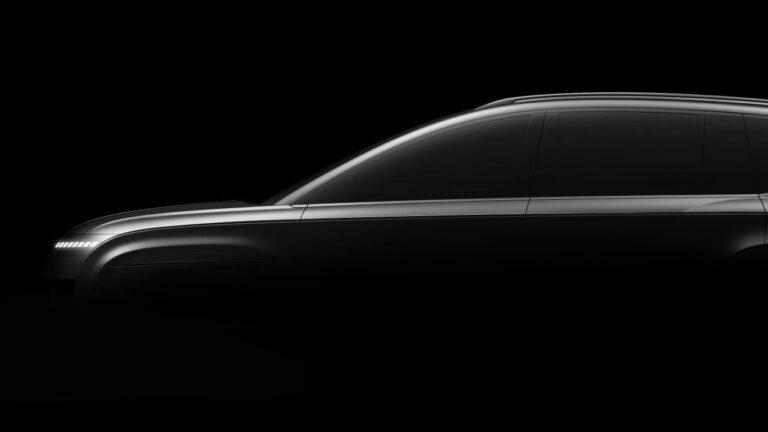13 Vintage Pickup Models That No One Likes

Nothing says America more than a good old-fashioned pickup truck. Pickups are firmly ingrained into the fabric of the United States and are some of the planet’s most dependable and durable vehicles.
Names such as F-150, Silverado, and Super Duty conjure up images of great trucks. Yet, not every truck produced can fulfill the American dream with one or two that the manufacturers would rather we forget.
A lack of reliability, a poor payload capacity, and lousy build quality can all contribute to a poor pickup truck. Based on the criteria above, this list contains 13 of the worst offenders and any significant issues, such as recalls that seriously hurt a truck’s reputation.
Subaru Baja

Attempts to combine a pickup truck with another vehicle are nothing new; just check out the Ford Ranchero or Chevrolet Avalanche. Yet one of the worst attempts was the Subaru Baja, built by the Japanese manufacturer from 2002 to 2006.
However, owners reported poor experiences with the Baja as they drove it. Some owners said that the small pickup bed was useless for storage, the 2.5-liter engines, naturally aspirated and turbocharged, were gutless, and the ground clearance was too low. Subaru tried to make the mixture of SUV and pickup work, but it didn’t end well.
Chevrolet SSR

The Chevrolet SSR is one of the more obscure pickup trucks ever created. In the mid-2000s, Chevrolet decided that we all needed a pickup truck with a folding roof and the added bonus of retro styling. This led to the SSR, a pickup with a design harking back to the 1950s and a 300-hp 5.3-liter Vortec V8 under the hood.
Chevrolet would later add the 6.0-liter LS2 V8 with 390-hp. However, the SSR didn’t have the most favorable reviews. Despite the big V8s, the heavy SSR had less-than-impressive acceleration, and the folding roof took up a lot of room in the bed. The SSR was a good attempt at doing something different, but it didn’t resonate with the public.
Chevrolet Avalanche

We’ve already touched on the Chevrolet Avalanche, but it’s a pickup truck that again tries to combine the best of an SUV with the best of a truck. While it had some good aspects, such as its interior and the space in the cabin, the Avalanche suffered from several problems.
The vast majority of Avalanche model years have several problems, with an unusual issue being that interior accessories can sometimes fall off. Transmission problems and oil consumption are common issues and the 2002 Avalanche had a pretty scary braking issue. The last thing anyone wants is a braking problem in any vehicle.
2002 Lincoln Blackwood

The 2002 Lincoln Blackwood was a very cool and quirky luxury truck. It certainly has one of the more stylish designs of any pickup on the market. Still, sadly for the American manufacturer, there are mixed opinions on just how good the Blackwood was.
For starters, the pickup bed was not simply steel; Lincoln decided to carpet it. While it looked good, hauling materials such as firewood or metal wouldn’t take long to stain and scratch the delicate carpet. The Blackwood also faced stiff competition from the Chevy Avalanche and Cadillac Escalade EXT, and the Blackwood’s $31,785 MSRP was around $2,000 higher than the Escalade EXT.
2018 Mercedes Benz X-Class

In the 2010s, Mercedes-Benz wanted a piece of the pickup truck action. So, it blended its European prowess with American pickup trucks to create the X-Class. Yet the launch didn’t go well, as owners unearthed a major roof problem.
According to the RAC, a defective operating manual meant that the roof load of the X-Class could be exceeded if the owner retrofitted a canopy onto the roof loading platform. This could cause the canopy to break and the load on the roof to detach and fall, which would be dangerous to both following traffic and potentially to the occupants inside the truck.
1972 Ford Courier

The 1972 Ford Courier might bear the Ford name, but it looks entirely different to some. After Ford’s absence from the pickup segment for 12 years, the Blue Oval decided to pay Mazda to use their B-Series trucks, which they labeled the Ford Courier.
Ford wasn’t alone in importing pickup trucks in the 1970s, with GM importing Isuzu Fasters and Chrysler offering the Mitsubishi Firte as the Plymouth Arrow. The Courier was a simple and sturdy truck, but buyers hankered after a fully-fledged, better-equipped Ford truck. After just four years, the Courier was out of production.
2000 Dodge Dakota

Dodge is no stranger to the pickup truck world. It launched the Dakota in 1986, and the second generation ran from 1997 to 2004. For the final two years of its production, the truck became the Ram Dakota, yet despite the long production run, it is not the best-remembered pickup.
The 2000 Dakota had significant issues, including broken exhaust manifold bolts and multiple coolant leaks. Engine problems are also common, with RepairPal reporting the issues are due to intermittent connections in the crank position sensor wire connector. Some owners even reported that the rear wheel assembly fell off the truck completely, which was a scary issue.
Jeep Gladiator

In its defense, the Jeep Gladiator is an excellent pickup truck for off-roading. Jeep excels in this area but has its fair share of issues. Build quality is a significant issue with the Gladiator, but more concerning is the “death wobble” that can occur around 17,000 miles.
This can worsen to the point that drivers can’t take their Gladiator over 45 mph for at least six weeks while they await pickup truck repairs. This is traced back to a severe defect with the steering and suspension, leading to a terrifying driving experience — not one that anyone should suffer.
Hummer H2 SUT

The issues surrounding the Hummer H2 are well documented. Expensive, overweight, and slow, AM General tried to make the Hummer more appealing by creating the H2 SUT, a version of the H2 with a small pickup bed for storage, but it did little to improve people’s feelings about it.
Car and Driver explained a few of the problems, including that the load-floor length increased to 72.8 inches, which meant the luggage would intrude into the cabin. Another issue is that anyone around the six-foot mark is in the H2; there is no room to fold the seats in the rear unless you move the power front seats forward and compromise their legroom. The H2 was also terribly uneconomical, with just a 10 mpg rating in the city and 13 mpg on the highway.
Cadillac Mirage

Cadillac is not known for its pickup trucks, but it once had one in the range. This is the Cadillac Mirage, a striking-looking vehicle that the American manufacturer only produced for a few years. This means that in 2024, the Mirage is incredibly rare.
But there were good reasons for its short production run. The Mirage proved impractical thanks to the small size of the bed, although it did have more flair than its main rival, the Chevrolet El Camino. Another issue was that Cadillac had no control over the quality of the Mirage’s bodies, as all of them were produced by Traditional Coach Works, a new company founded by Cadillac dealer manager James Kribbs.
Reliant TW9/Ant

What looks like a quirky little vehicle, and a joke rather than a genuine production vehicle, is the Reliant TW9, also called the Ant. The Ant’s name, as the size of the pickup suggests, was due to its small size, and the Ant took the same three-wheeled layout as the Reliant Robin would do.
The Ant had a long production run, with local government agencies being the biggest customers. A crucial part of its success was selling it as a cab and chassis so customers could choose any body style they wanted. But thanks to the three-wheel layout, the Ant could be quite unstable in the corners, especially with a big load in the rear.
Dodge Rampage

What looked like a quirky and fun pickup truck was a nightmare for its owners. The most apparent problem with the Dodge Rampage was its pickup truck bed, which was too small. But that wasn’t all that was wrong with the small pickup.
Owners reported the clutch blowing on their Rampage, but a more significant concern is rust. A notable area where this occurs is around the front leaf spring hangers and where they meet the frame. Rot is also a problem in this area; you could cause harm if you leave it unattended or don’t keep an eye on it.
Ford Explorer Sport Trac

The Ford Explorer Sport Trac is an interesting puzzle of a pickup truck. It was Ford’s first stab at a mid-sized pickup, and it did very well for the most part. Ford sold the Sport Trac from 2000 to 2010, and it spanned two generations. Both had a 4.0-liter Cologne V6 under the hood, but the second generation also had a 4.6-liter 24-valve modular V8.
However, the biggest issue facing the Sport Trac was its competition. Rivals such as the Chevrolet Colorado and Toyota Tacoma were putting up a serious fight against it. As a result, the Ford pickup didn’t stand out as well as it should have, even though a competent mid-size truck was in plain sight.





